Presentations lose impact when your audience can’t fully understand the language on your slides. Research on global workplaces shows that language barriers remain one of the biggest obstacles to clear communication, especially in client meetings and international classrooms. That’s one of the reasons why slide translators are becoming so popular. Instead of breaking layouts by copying text into generic translators, these tools preserve your design while translating content instantly. In this guide, I’ll show you the best slides translator for PowerPoint and other reliable options you can use in 2025.
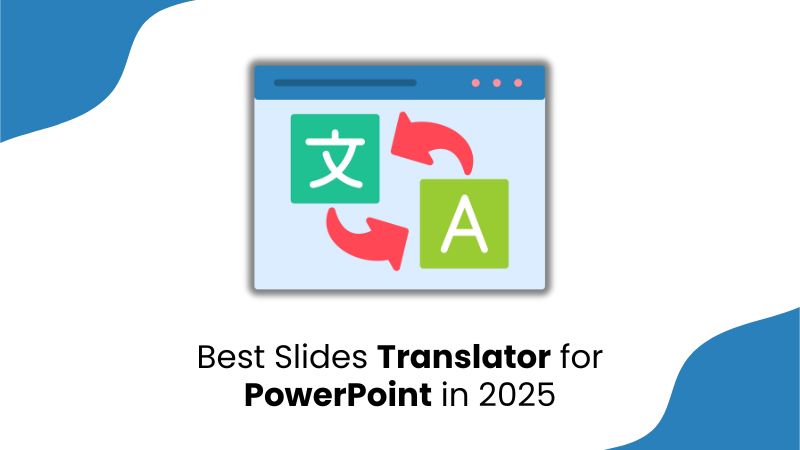
Why You Need a Slides Translator
Slides often carry more weight than spoken words. They set the tone, deliver key data, and help your audience follow your message visually. But when your viewers speak different languages, even the most refinedpresentationcan lose its impact. A slides translator ensures that your visuals and words work together seamlessly across languages, making your content clear, inclusive, and professional no matter where it’s shown.

Here are a few key situations where having a reliable slides translator makes all the difference:
International meetings: When pitching to global clients or reporting at multinational conferences, translated slides allow every stakeholder to follow the discussion.
Education: Students learn best when lessons are in their native language. Translating slides into local languages like Spanish, French, or Hindi makes complex topics more accessible.
Client pitches: If you’re presenting a sales deck in another country, translated slides create trust and show respect for cultural context.
Cross-cultural collaboration: Companies expanding abroad can ensure smoother communication by translating training materials, compliance presentations, or onboarding slides.
By translating your presentations, you’re making sure your message lands with precision.
Best Slides Translators to Try in 2025
There’s no shortage of ways to translate slides, but the quality varies a lot depending on the tool you choose. Some prioritize speed, while others focus on preserving design or handling large files. Over the past year, a few platforms have become reliable enough to use in professional settings without constant edits afterward. What makes these stand out is their ability to keep your presentation readable, refined, and ready to share in another language.
1. AnyDoc Translator
If you often work with presentations that use custom fonts, layouts, and visuals, AnyDoc Translator is built for that exact challenge. It’s an AI-based platform that translates entire PowerPoint or Google Slides files while keeping every element of your design intact. The translations read naturally, even in languages with complex scripts like Malayalam or Arabic. You can preview both versions side by side, which helps you catch minor issues before exporting. It’s web-based, so there’s no software setup or installation required, and it supports over fifty languages.
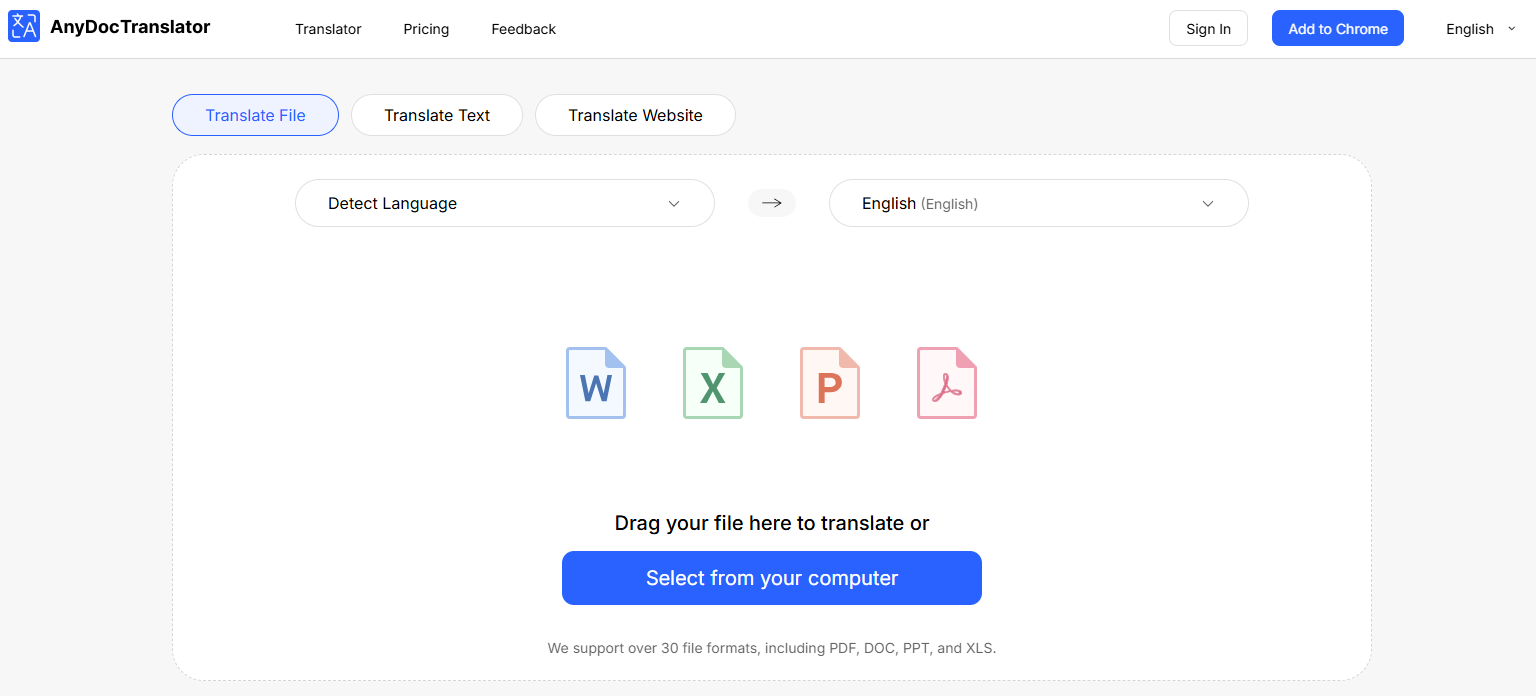
Features
Translates complete presentations while keeping the layout intact.
Supports over 100 languages, including less common regional ones.
Offers AI-powered translations for better contextual accuracy.
Allows direct upload of PPT, PPTX, or Google Slides files.
Pros
The interface is fast and user-friendly.
Handles large files like eBooks.
Maintains document layout after translation.
Cons
Requires stable internet.
The free version has size limits; larger books may need a premium plan.
2. Microsoft PowerPoint Translator Add-in
If your work already revolves around Microsoft 365, the PowerPoint Translator Add-in is a convenient choice. It integrates directly into PowerPoint, so you don’t have to leave the app to translate slides or add subtitles. Its practicality comes from its ability to translate text on slides in real time while also generating live subtitles for spoken content. This feature is useful during bilingual presentations or online meetings. It’s designed for Office users who want translation without opening multiple tools, though it does require an active Microsoft 365 account.
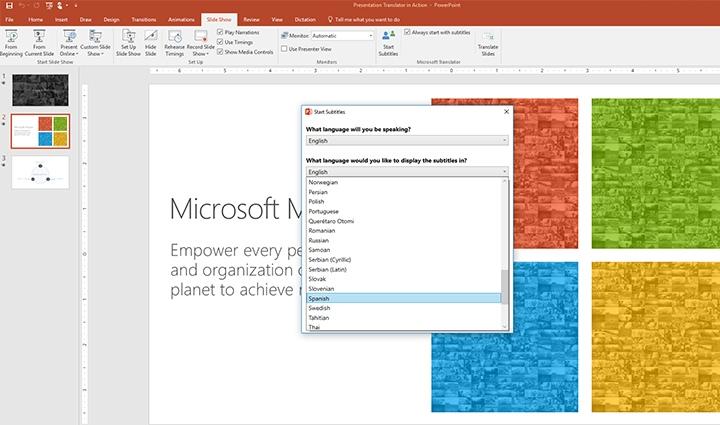
Features
Built directly into PowerPoint through Microsoft 365.
Provides real-time subtitles in multiple languages.
Supports both text translation and live speech-to-text captions.
Pros
Convenient for Office users, supports live audiences.
Translates slides instantly within PowerPoint.
Cons
Requires a Microsoft 365 account, design preservation is limited.
3. Google Slides Built-In Translate Tool
For anyone who works primarily in Google Workspace, the built-in Google Slides Translate option is a simple and free solution. It runs directly in your browser and relies on the same translation engine that powers Google Translate. The process takes just a few clicks, and since it’s cloud-based, you can use it from any device. It handles text-heavy slides quite well, though slides with layered visuals or custom fonts might need minor adjustments afterward. It’s usually used by teachers, students, or small teams who need quick results without worrying about software or storage.
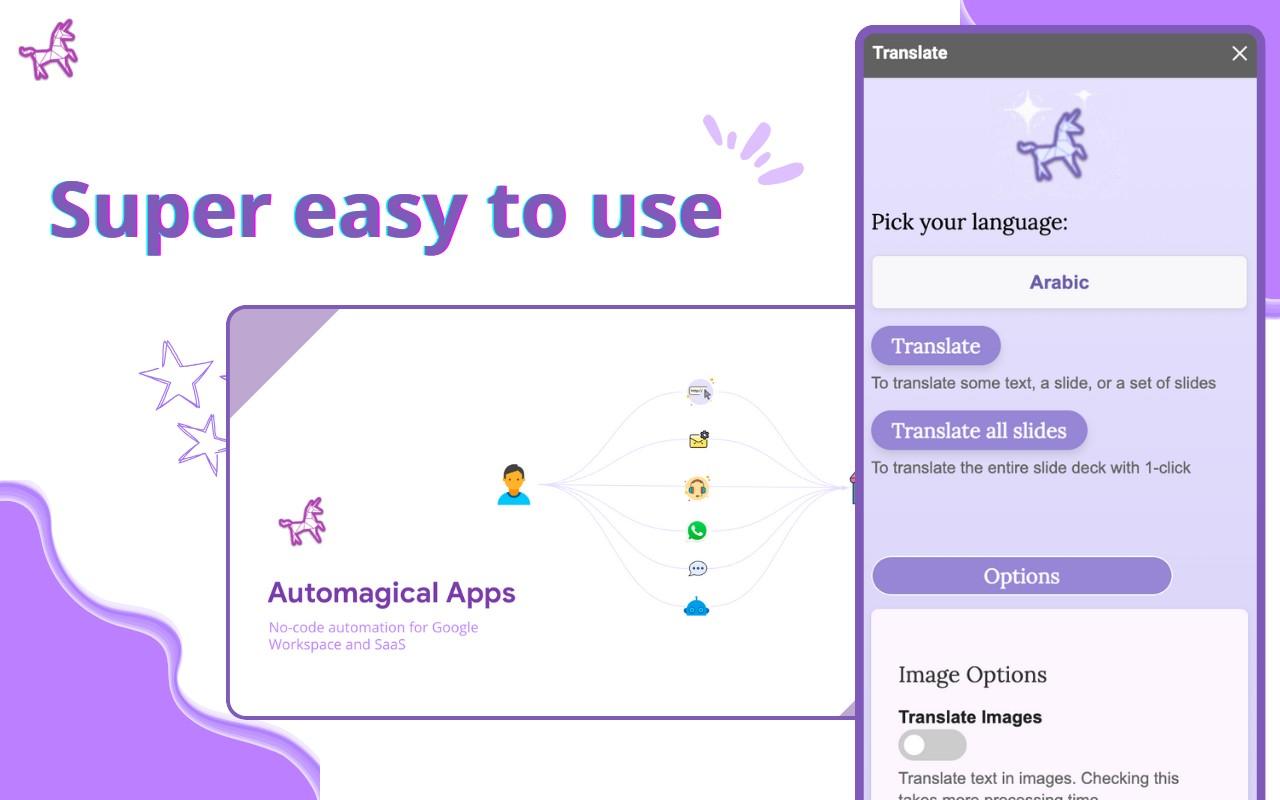
Features
Works directly within Google Slides so no need for extra software.
Instantly translates text into over 100 languages.
Team members can view and edit translated slides together.
Translate and save presentations from any device with internet access.
Pros
Free, automatic, easy to access anywhere.
Keeps formatting and design consistent after translation
Cons
Layout may shift slightly.
May mistranslate technical or context-specific terms.
4. Smartcat
Smartcat is a cloud-based translation platform designed for collaboration, letting several users translate and review slides simultaneously. The tool includes translation memory and glossary features that keep terminology consistent across large projects. It works well for corporate localization, training material, or multilingual product launches. The interface has a learning curve, but once you get used to it, it saves hours of manual editing.
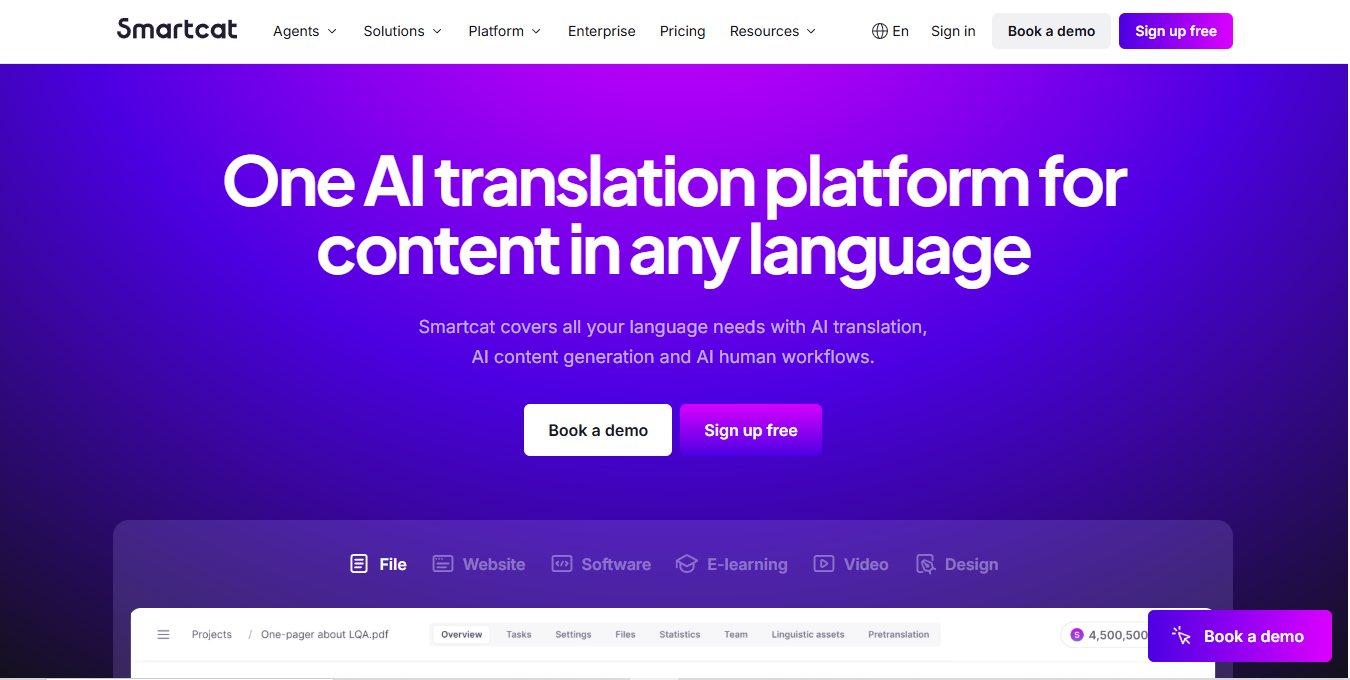
Features
Supports both PowerPoint and Google Slides
Uses advanced AI translation combined with human editing options
Offers a collaborative workspace where teams can translate and review slides
Automatically preserves slide layouts, fonts, visuals, and animations
Pros
Ideal for large teams, professional-level accuracy.
Integrates with CAT tools, translation memories, and glossaries
Cons
Interfaces can be overwhelming for beginners.
5. Online DocTranslator
When you need to translate a presentation quickly without adjusting settings or reformatting, Online DocTranslator keeps things simple. It supports PowerPoint, PDF, and other document types, letting you upload your file, pick a target language, and download the translation in minutes. What’s impressive is how it manages to preserve the general structure and visuals of each slide automatically. The translation quality is strong for straightforward text, and the tool handles large files efficiently thanks to its cloud-based processing.
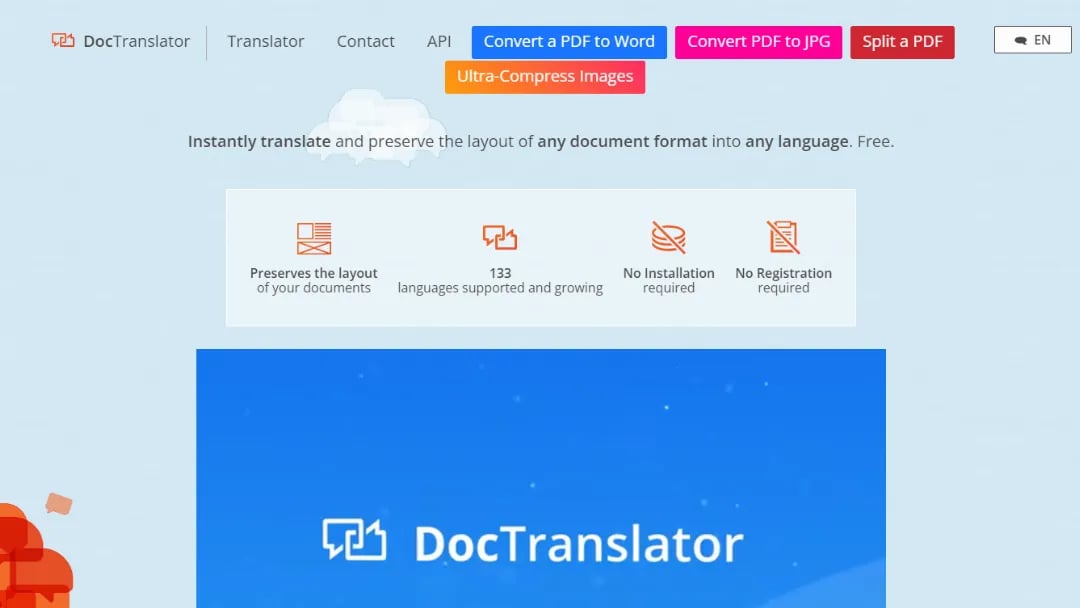
Features
Translates PowerPoint slides directly in the browser
Preserves formatting, fonts, and design elements automatically after translation.
Supports over 100 languages, including regional ones like Urdu, Thai, and Malay.
Ensures file privacy by deleting uploaded documents from servers
Pros
Fast and automatic.
Uses cloud-based processing for quick translations, even for large presentations.
Cons
Free tier is limited; formatting control is minimal.
If you need a translated version without spending much time tweaking settings, DocTranslator is the quickest route.
How to Use AnyDoc Translator to Translate Slides
Now that you know what AnyDoc Translator offers, the next step is learning how to translate slides automatically. The process is straightforward once you know the sequence, and by following the steps carefully, you can go from uploading a PowerPoint file to downloading a fully translated version without losing your design, fonts, or layout.
Step 1: Open the AnyDoc Translator website and select the “Translator”option from the top menu.
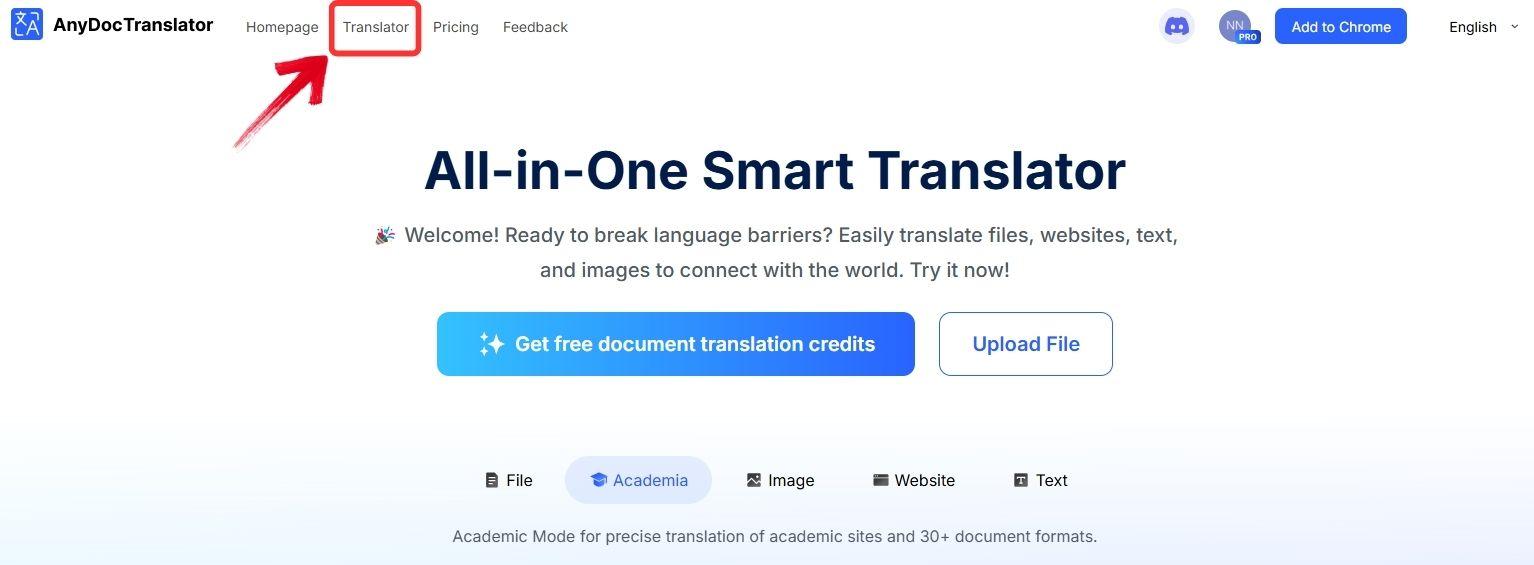
Step 2: AnyDoc can translate files, PDFs, images, and even web pages. For this guide, click on the “Translate File” tab to continue.
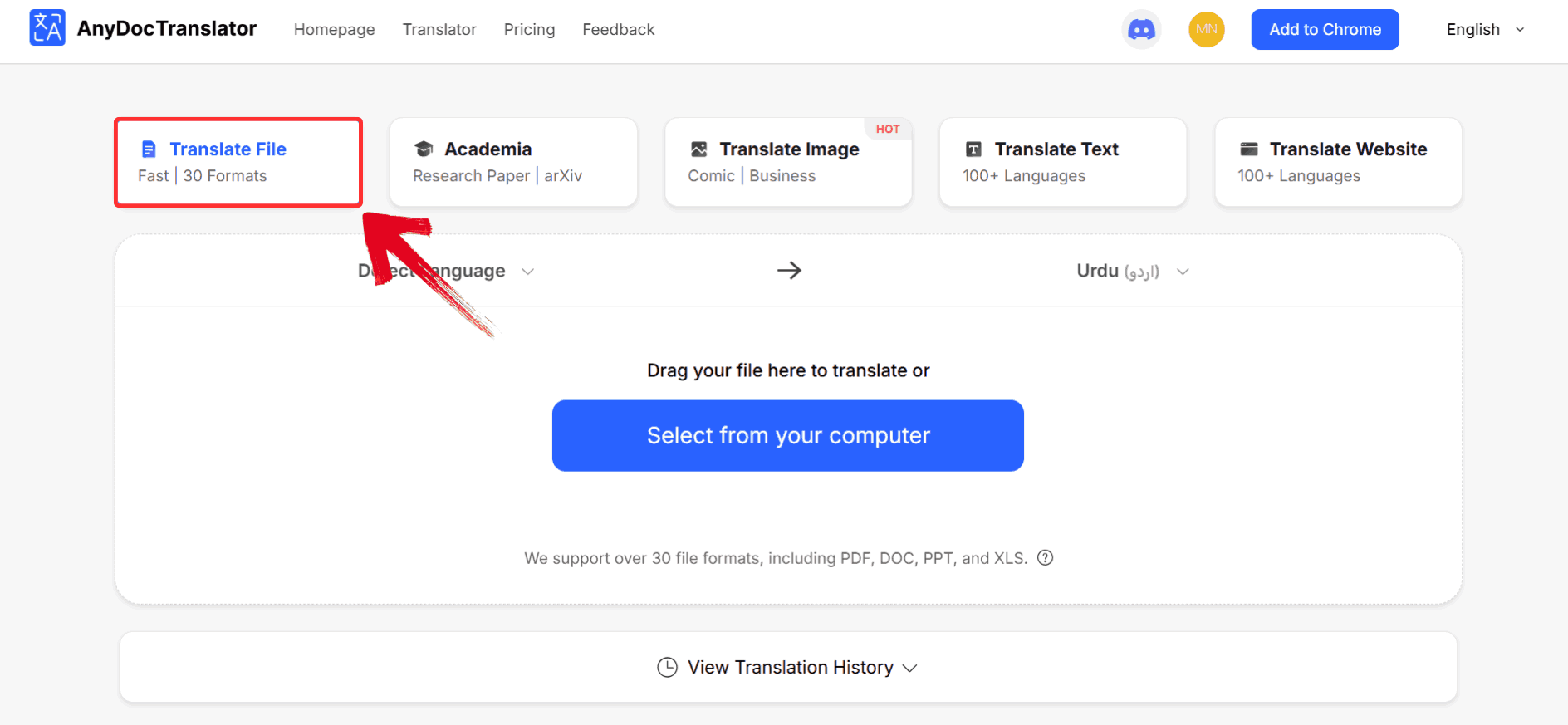
Step 3: Hit “Select from your computer” to upload your file, or simply drag and drop it into the upload box.
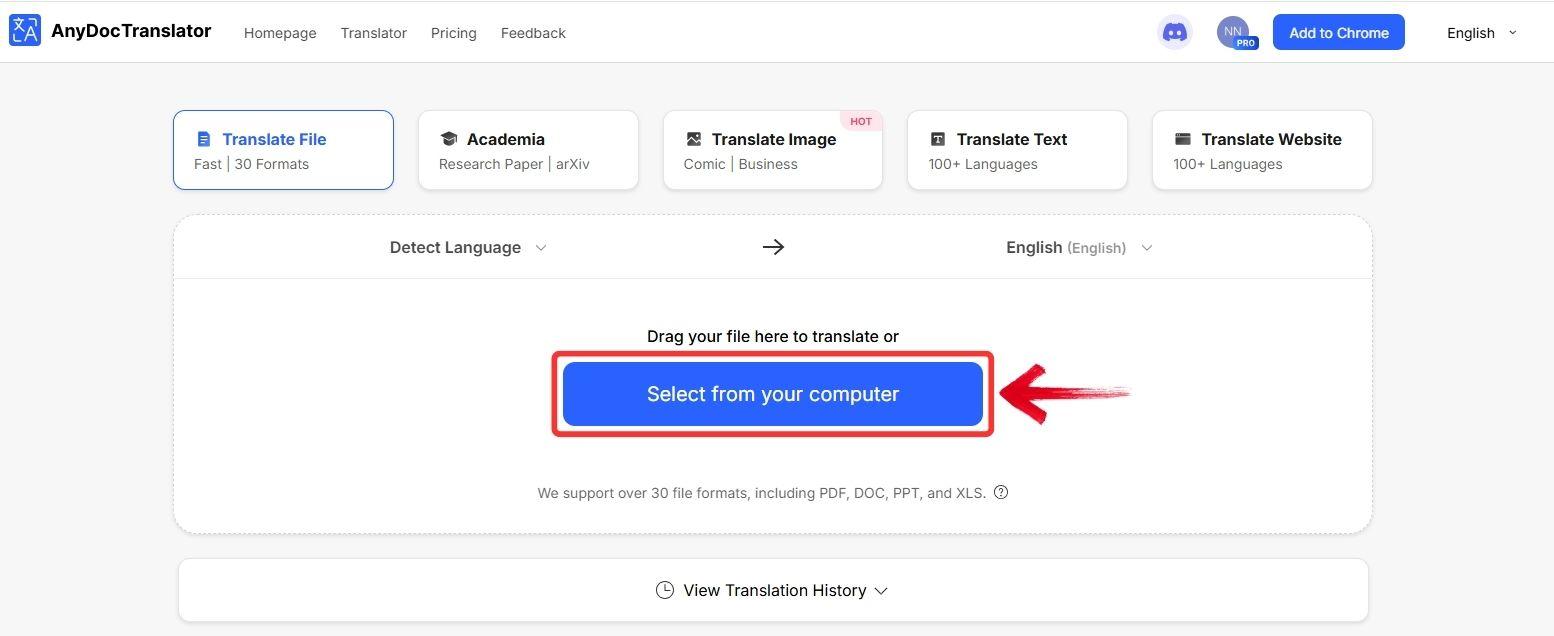
Step 4: After the upload, AnyDoc will automatically detect your file’s language. Click the globe icon, then choose your target language. The translation will begin right away.
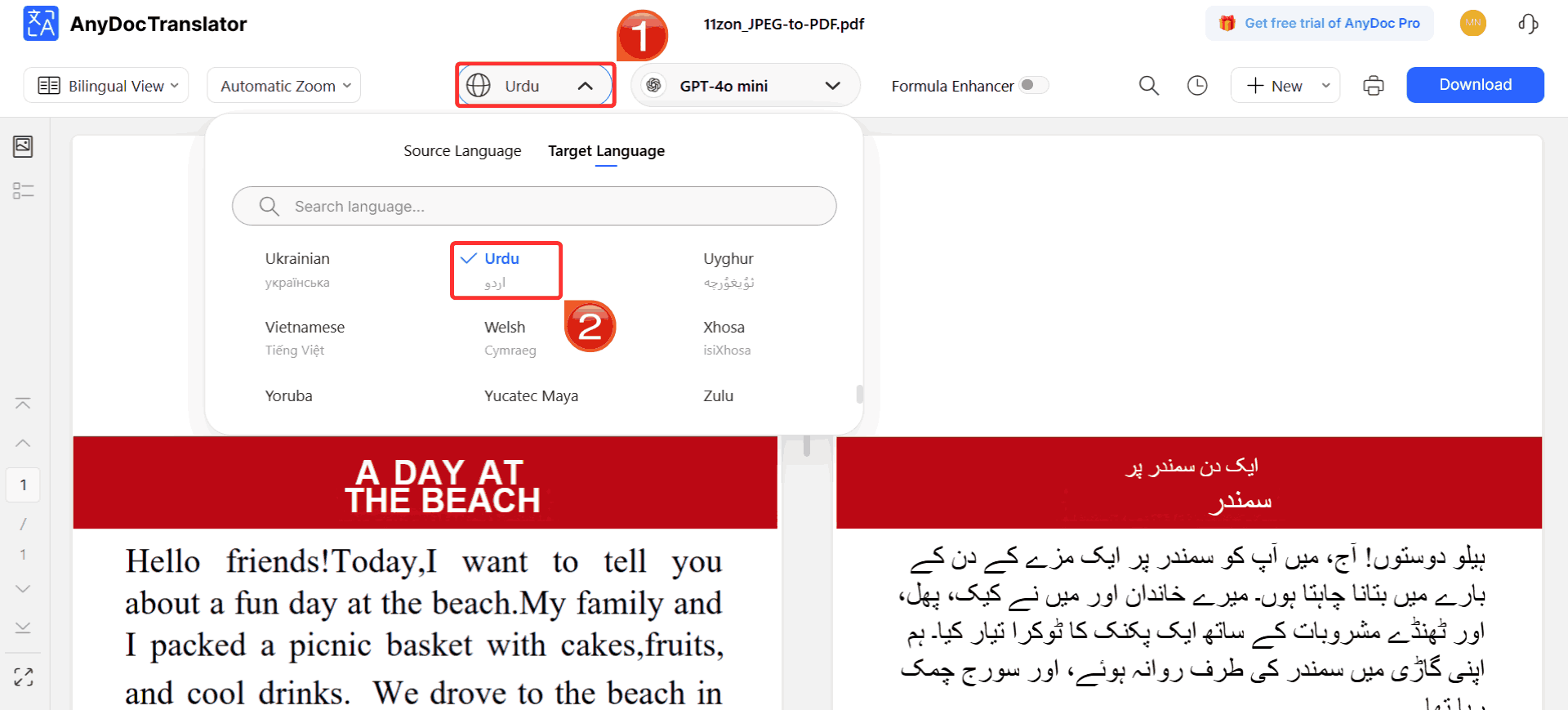
Step 5: When the translation is complete, click“Download” to save your file. You can either download the fully translated PowerPoint or export just the text as a separate file.
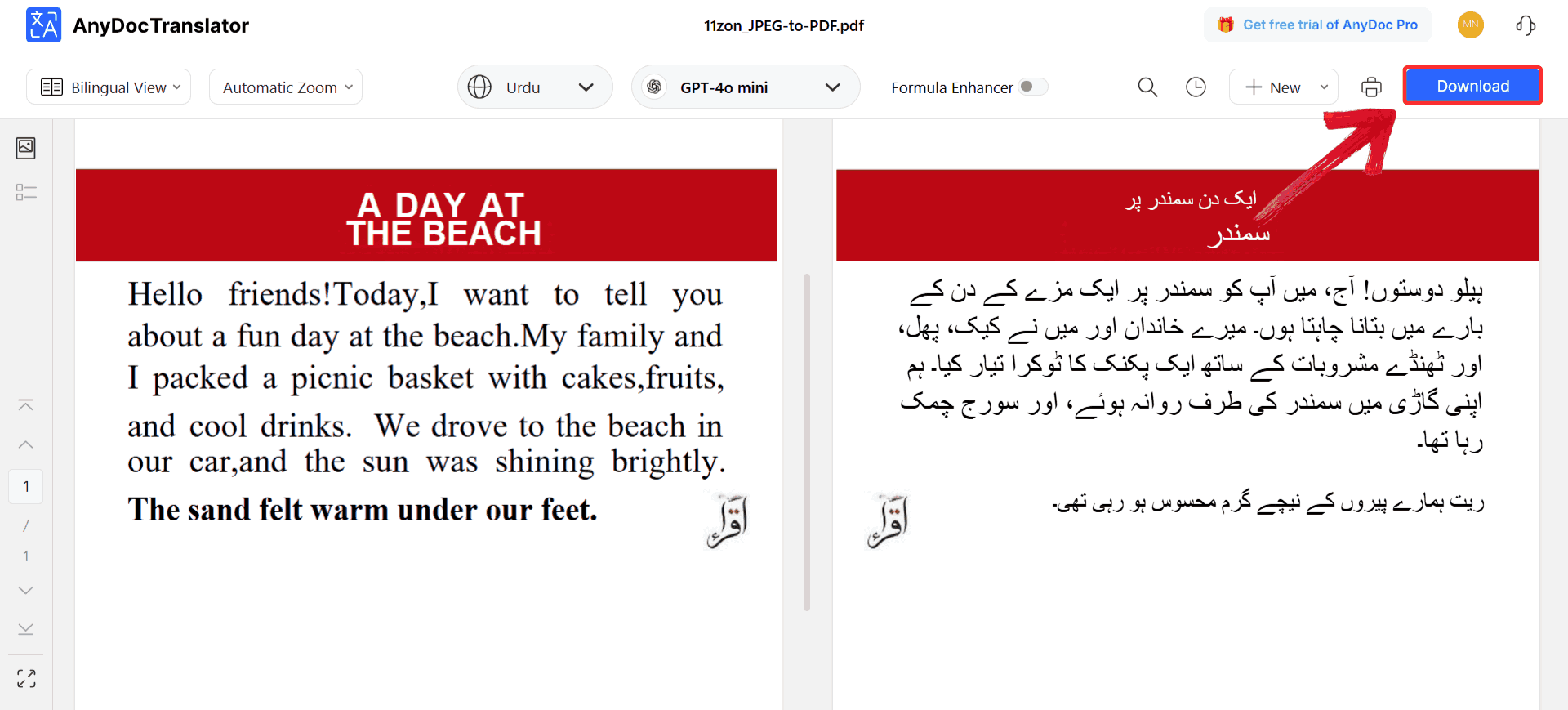
Comparison of Tools
With so many translation tools available, it helps to see how they differ when you put them side by side. Each option has its own strengths, from real-time translation to layoutpreservation, and knowing those differences can save you time and as well as energy. The table below breaks down the key details so you can quickly decide which slides translator for PowerPoint fits best with your workflow and translation needs.
| Tool | Best For | Pros | Cons |
|---|---|---|---|
| AnyDoc Translator | PowerPoint and Google Slides | Accurate translations, preserves design and fonts, supports 100+ languages | Requires an internet connection |
| Microsoft PowerPoint Translator Add-in | Live presentations and Office users | Integrated with PowerPoint, supports real-time subtitles and speech translation | Needs Microsoft 365 subscription, limited layout control |
| Google Slides Translate | Google Workspace users | Free, browser-based, automatic translation | May slightly alter slide layout |
| Smartcat | Team projects and localization work | Supports collaboration, translation memory, and cloud access | Can feel complex for beginners |
| DocTranslator | Quick slide conversions | Fast, handles large files, automatic processing | Free version has limited options, less design flexibility |
From this table, it’s clear that while there are several reliable options, AnyDoc Translator stands out for offering a strong balance between translation accuracy and designpreservation.
FAQs
1. Can I translate slides for free?
Yes, tools like Google Slides Translate and DocTranslator offer free tiers, though they may limit formatting or file size.
2. Will slide translations keep the fonts and design intact?
AnyDoc Translator and Smartcat handle layout preservation best. Free tools may slightly alter design.
3. Can I translate slides automatically without copy-pasting text?
Yes, with tools like AnyDoc Translator and Microsoft PowerPoint Translator Add-in, the process is automated.
4. Which tool is best for live presentations?
Microsoft PowerPoint Translator Add-in works best since it provides real-time subtitles.
5. Which tool is best for teams?
Smartcat is designed for collaborative, team-based slide translation projects.
The Bottom Line on Slides Translation Tools
Language should never be the reason your presentation loses impact. With the right slides translator for PowerPoint, you can communicate your ideas clearly to any audience. AnyDoc Translator offers the most balanced mix of accuracy, layout preservation, and ease of use, making it the best all-around option in 2025. Google Slides Translate and DocTranslator are great free choices for quick needs, while Microsoft’s add-in and Smartcat serve more specialized roles. Personally, I recommend starting with AnyDoc Translator for most professional scenarios. It removes the formatting headaches that come with free tools and ensures your slides look polished in any language.

